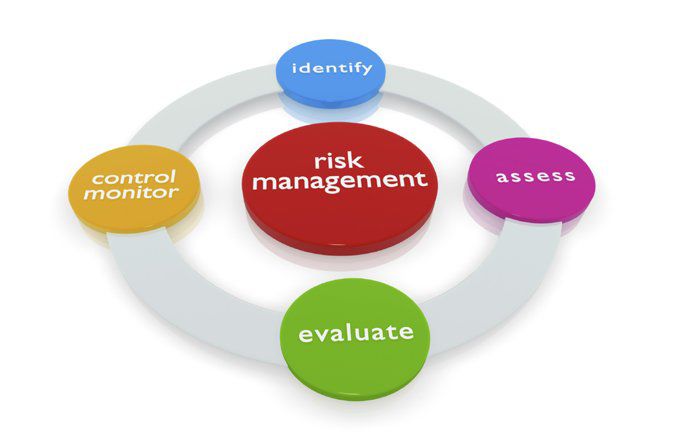In the world of investing, risk management investing is an inherent factor that can significantly impact portfolio performance. While it’s impossible to eliminate risk entirely, prudent risk management strategies can help investors mitigate potential losses and achieve their financial objectives with greater confidence. In this article, we’ll explore the importance of risk management investing and discuss various strategies that investors can employ to build a resilient portfolio in the face of market uncertainties.
Understanding Risk in Investing
Risk, in the context of investing, refers to the possibility of losing money or failing to achieve expected returns on investment. Common types of investment risk include:
- Market Risk: The risk that investment values will fluctuate due to changes in market conditions, such as economic trends, interest rates, or geopolitical events.
- Credit Risk: The risk of default by borrowers, particularly relevant in fixed-income investments such as bonds or loans.
- Liquidity Risk: The risk that investors may not be able to buy or sell assets quickly and at fair market prices, leading to potential losses.
- Inflation Risk: The risk that inflation will erode the purchasing power of investment returns over time, reducing real returns.
Importance of Risk Management
Effective risk management investing iiis essential for investors to preserve capital, achieve consistent returns, and navigate volatility in financial markets. By proactively identifying and managing risks, investors can reduce the likelihood of significant losses and enhance the resilience of their portfolios. Key benefits of risk management include:
- Preservation of Capital: Risk management strategies aim to protect investors’ capital from excessive losses during periods of market downturns or unexpected events.
- Consistent Performance: By managing risk effectively, investors can potentially achieve more stable and predictable investment returns over the long term, regardless of market conditions.
- Diversification: Diversifying across different asset classes, sectors, and geographic regions can help spread risk and reduce the impact of adverse events on the overall portfolio.
- Peace of Mind: Implementing robust risk management practices can provide investors with greater peace of mind and confidence in their investment decisions, allowing them to stay disciplined during periods of market volatility.
Risk Management Strategies
- Asset Allocation: Asset allocation is a fundamental risk management investing strategy that involves spreading investments across different asset classes, such as stocks, bonds, cash, and real estate. By diversifying across asset classes with low correlations, investors can reduce overall portfolio risk while potentially enhancing returns.
- Diversification: Within each asset class, diversification involves spreading investments across multiple securities or investments to reduce the impact of individual company or sector-specific risks. Diversifying across industries, geographies, and investment styles can help mitigate concentration risk.
- Risk Assessment and Monitoring: Regularly assessing and monitoring portfolio risk is crucial for identifying emerging risks and making informed investment decisions. Tools such as value-at-risk (VaR) analysis, stress testing, and scenario analysis can help investors quantify and manage portfolio risk effectively.
- Use of Derivatives and Hedging Strategies: Derivatives such as options, futures, and swaps can be used to hedge against specific risks, such as currency risk or interest rate risk. Hedging strategies aim to offset potential losses in one part of the portfolio with gains in another, thereby reducing overall portfolio risk.
- Active Portfolio Management: Active portfolio management involves regularly reviewing and adjusting investment allocations based on changing market conditions, economic outlook, and investment objectives. Active managers seek to capitalize on opportunities and mitigate risks through tactical asset allocation and security selection.
- Risk Tolerance and Investor Education: Understanding risk tolerance and investment objectives is critical for developing an appropriate risk management investing strategy. Investors should align their investment decisions with their risk tolerance and remain disciplined during periods of market volatility.
Conclusion
Risk management investing is an integral part of the investment process, enabling investors to navigate uncertainty and achieve their financial goals with greater confidence. By implementing sound risk management strategies such as asset allocation, diversification, and active portfolio management, investors can build resilient portfolios that are better positioned to withstand market fluctuations and deliver consistent returns over time. While it’s impossible to eliminate all investment risks, prudent risk management investing can help investors mitigate potential losses and maximize long-term wealth accumulation. By prioritizing risk management investing and staying disciplined in their investment approach, investors can build a solid foundation for financial success and achieve their desired outcomes in the dynamic world of investing.
“Please visit our website for more information: https:https://themidatlanticfund.com/fixed-income-funds/
For more detailed information, please check out our links ;
facebook : https://www.facebook.com/profile.php?id=100068341446074&view_public_for=108433734764977
Linkedin : https://www.linkedin.com/company/mid-atlantic-fund/

